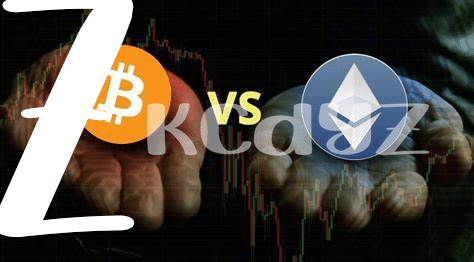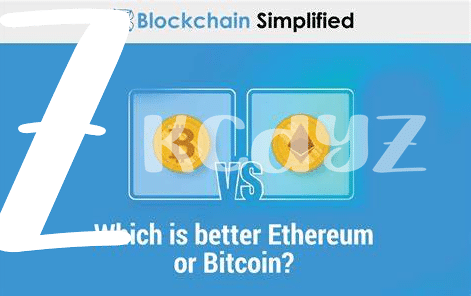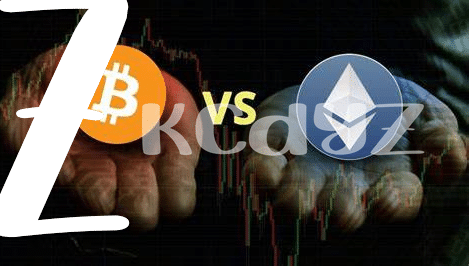🌉 Bridging Basics: Bitcoin and Ethereum Explained

Imagine you’re at a party where everyone speaks different languages. Bitcoin and Ethereum are like two popular guests, each with their own unique way of communicating. Bitcoin, the first of its kind, speaks a straightforward language focused on transferring value, akin to sending digital gold from one person to another. Its script is like texting with limited emojis, enough to get the job done, but not much else. On the other hand, Ethereum is the multilingual friend who not only talks about transferring value but can also handle complex conversations thanks to smart contracts. These smart contracts are like phone apps—they can do almost anything, from creating decentralized applications (Dapps) to executing agreements without a middleman.
Let’s break it down in a simple table to see their main differences:
| Feature | Bitcoin | Ethereum |
|---|---|---|
| Primary Use | Digital Currency | Smart Contracts & Dapps |
| Language | Scripting (Simple) | Solidity (Turing Complete) |
| Blockchain Type | Single-purpose | Multi-purpose |
While Bitcoin laid the groundwork with its groundbreaking blockchain, Ethereum took it several steps further, opening a world where transactions can carry out complex instructions. Transitioning from Bitcoin to Ethereum development is like moving from creating basic text messages to developing full-fledged mobile applications—both valuable but serving different purposes. Each has its own community, tools, and potential, inviting devs to explore and contribute in varying capacities.
🛠️ Tools of the Trade: Ethereum Development Essentials
Embarking on the adventure of Ethereum development is like discovering a new toolbox after you’ve been working with a pretty solid one for years. Just as you’ve mastered the intricacies of Bitcoin’s framework, Ethereum unfolds a realm filled with new gadgets and possibilities. It’s a bit like stepping from the familiar territory of hand tools into a world brimming with power tools. Ethereum’s environment introduces you to smart contracts, a game-changer that acts as self-executing contracts with the terms directly written into code. Moreover, the Ethereum network thrives on its vibrant community and the plethora of development tools it offers, from Truffle, which streamlines smart contract development, to MetaMask, a bridge that connects you to the Ethereum ecosystem right from your browser. And if you’re curious about how to secure your future projects, consider exploring https://wikicrypto.news/the-future-of-crypto-storage-innovations-in-hardware-wallets for insights into cutting-edge crypto storage solutions. Embracing these tools not only equips you with the essentials for crafting your innovations on the Ethereum blockchain but also plugs you into an ever-evolving digital canvas where your creations can take flight.
💬 Speak Ethereum: Understanding Smart Contracts

Imagine you’re learning a new language, one that lets you chat not with people, but with computers. That’s what diving into the world of Ethereum feels like, especially when you get to the heart of it: smart contracts. Think of smart contracts like promises written in code. They’re agreements that live on the Ethereum network, automatically executing when certain conditions are met, no middlemen needed. 🛠️ Starting to explore this realm might feel like solving a puzzle, but it’s a game-changer in building decentralized applications, or Dapps as they’re fondly called. Through these contracts, you can create your own currency, run decentralized applications, and much more, right from your digital fingertips. 🎨 The beauty of this system is in its trustworthiness and efficiency, paving the way for a future where deals are sealed not with a handshake, but with lines of code. So, buckle up, and let’s begin decoding the magic behind smart contracts, setting the stage for a new way to understand agreements in the digital world. 🚀
🎨 from Blocks to Art: Diving into Dapps

Imagine taking your understanding of blocks from Bitcoin and turning it into a canvas where creativity meets technology. This is what diving into decentralized applications, or Dapps, feels like. It’s more than just code; it’s where your projects come to life, interacting directly with users in a dynamic, global gallery. Getting into Dapps means entering a world where you create not just transactions but experiences, leveraging tools that allow for things like voting, gaming, and decentralized finance—all built on the Ethereum blockchain. A key piece to understanding this creative universe is delving into smart contracts, the backbone of Dapps, automating transactions and building trust among strangers without the need for central authorities. For a smooth transition into this space, learning the nuances of Ethereum’s functionality and seeing how it contrasts with Bitcoin’s design is crucial. A great resource to deepen your understanding is exploring bitcoin consensus mechanisms and their importance versus ethereum, which sheds light on the differing approaches of both platforms. Embracing Ethereum opens up a world of possibilities, where you move from simply observing blocks stacking up to becoming the artist shadowing life into them, all the while creating something that might just reshape the world as we know it.
🚀 Launching Pad: Deploying Your First Ethereum Project
Imagine you’ve just crafted a masterpiece, and now it’s time to share it with the world. This is where you transition from building to launching. Deploying an Ethereum project is like setting a ship to sail: it requires preparation, understanding the right tools, and knowing the seas ahead. You’ll start with something called a “testnet,” which is a practice area. It’s the sandbox where you can play around, make mistakes, and learn without risks. Think of it as a rehearsal before the grand performance. Once you’re confident, you’ll move to the “mainnet,” the real deal, where your project goes live for the world to see.
| Step | Description |
|—————|——————————————————————————————————-|
| **Testnet** | A playground for developers where you can test your project without using real money. |
| **Mainnet** | The real Ethereum network where your project goes live and interacts with real users and transactions.|
Venturing into Ethereum’s ecosystem is a thrilling journey, requiring a solid grasp of tools and a strong community backing. The moment you deploy your project, you become a part of a vast, dynamic world. Engage with the community – they’re your best allies, ready to help you navigate through storms and celebrate your successes. Remember, deploying your first project is just the beginning. It’s a continuous process of learning, growing, and innovating.
🤝 Community Matters: Navigating Ethereum’s Ecosystem

Stepping into Ethereum’s world isn’t just about mastering code; it’s about joining a vibrant, diverse community that’s as passionate about innovation as you are. Picture this: developers from all corners of the globe, each with their unique ideas and projects, all working towards a common goal – to push the boundaries of what’s possible with Ethereum. From forums and social media to hackathons and meetups, there are endless opportunities to connect, learn, and collaborate. Whether you’re looking for advice, partnerships, or just a bit of coding camaraderie, there’s a spot for you in this lively ecosystem. 🌍💡 Remember, it’s not just about building your project in isolation; it’s about weaving your threads into the rich tapestry of Ethereum’s community, creating something that’s both personal and a part of a larger narrative. And, if you’re juggling between the technical intricacies of Bitcoin and Ethereum, figuring out the optimal way to secure your projects might be on your mind. Check out this guide on bitcoin and its interpretations in economic theories versus ethereum for insights on keeping your crypto safe while you navigate through this exciting journey. Welcome aboard! 🚀
